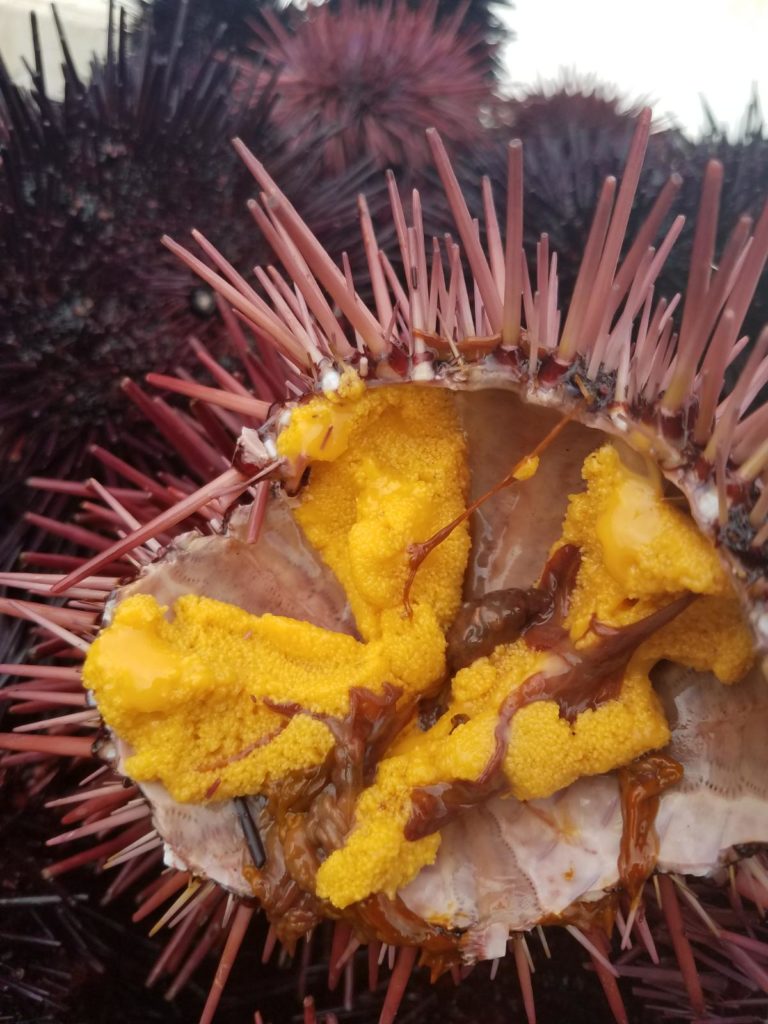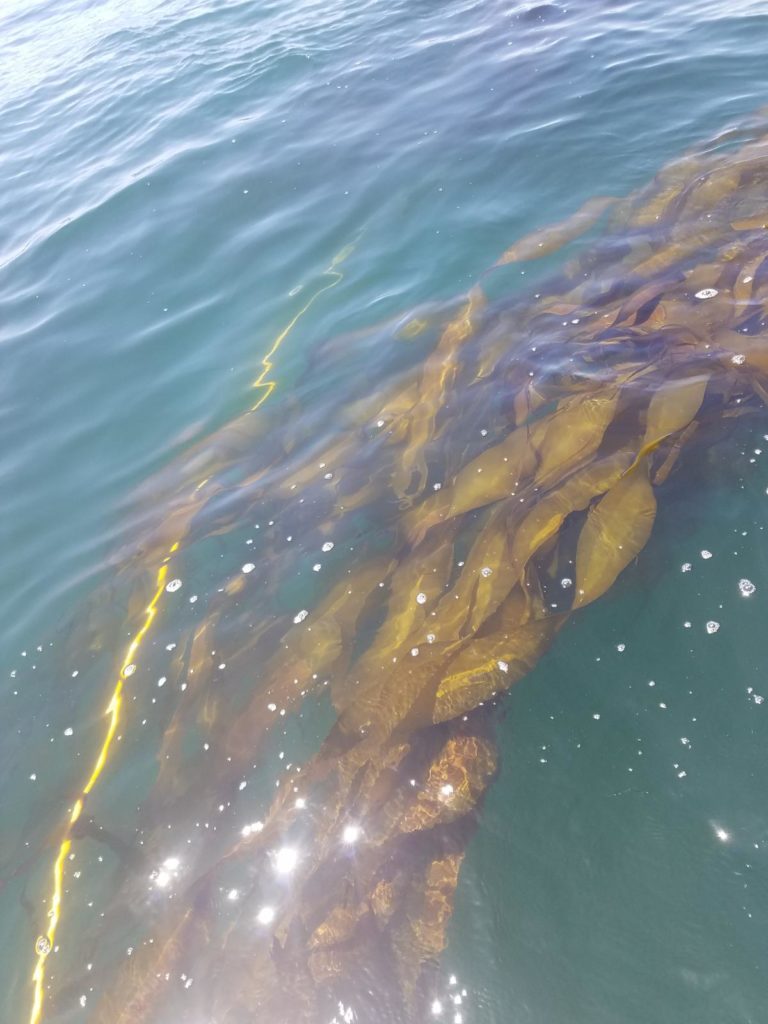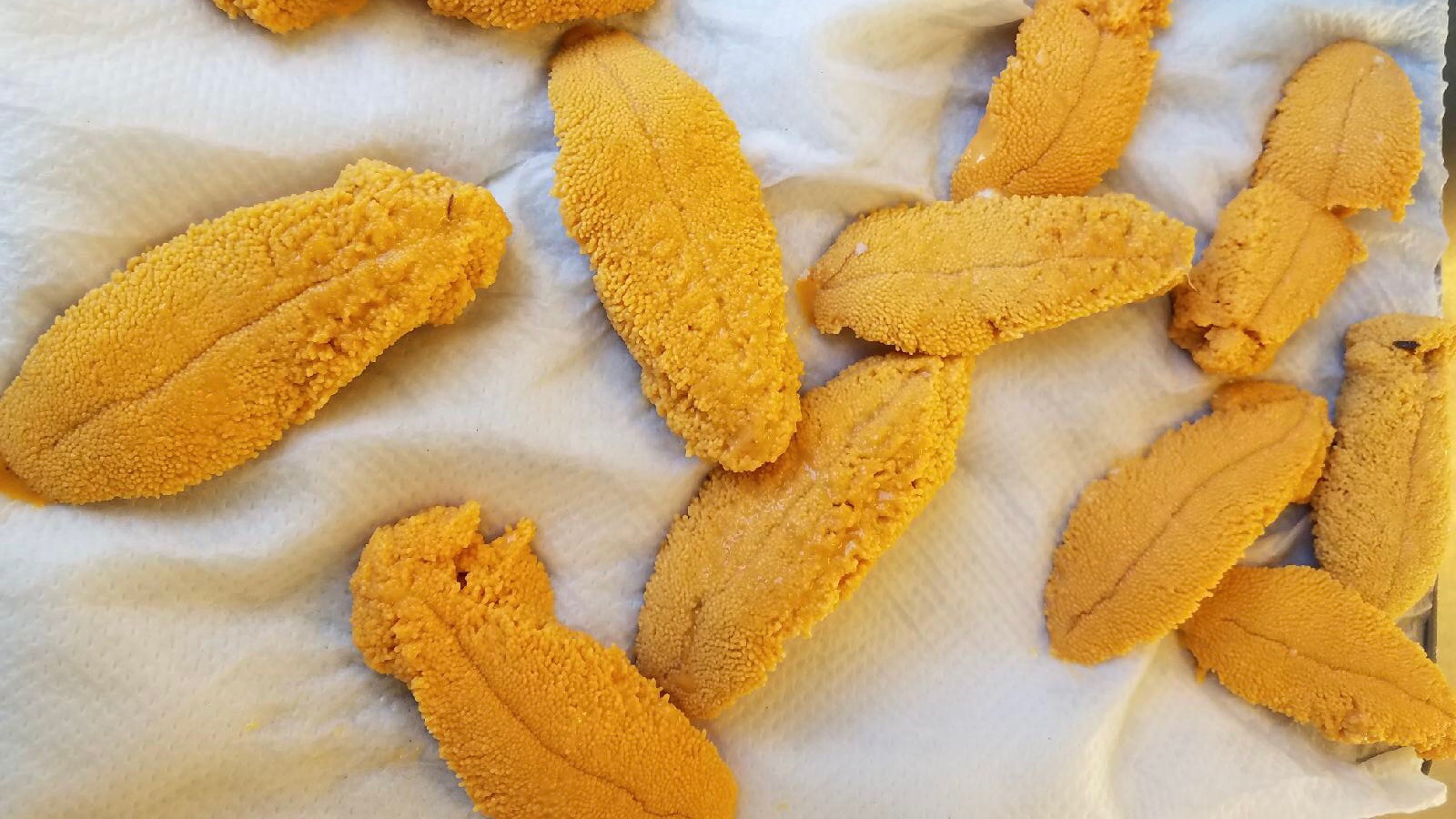Much of the uni we source here at Royal Hawaiian Seafood comes from Pacific Rim Seafoods, which is a uni fishery and processing plant based out of Fort Bragg, Ca. In the last few days, founder Tom Trumper was kind enough to share some industry knowledge and fun facts about uni diving. Mr. Trumper has been diving for over 45 years, and is one of the most well-respected uni divers in the countries. He has paved the way for uni divers everywhere as he began uni diving when almost no one else was. His vast impact on the industry is widely recognized and you can find out more about his life and craft in the movie Of the Sea. We at Royal Hawaiian Seafood are beyond lucky to have a true uni diving veteran as one of our main suppliers. When available, I highly recommend getting your hands on some of his world-famous uni as it is truly the best of the best.
1. Where are you from? How did you get into this industry?
Tom Trumper: I have been diving for sea urchins since 1975, and before that I was a commercial diver diving in the oil fields. I saw a sign searching for urchin divers, so I figured I would try it.
2. What made you decide to switch into the industry?
Tom Trumper: It was by accident. As I said, I was working in the oil fields in Louisiana and came to California for a vacation, I was supposed to be here for only a month. I was going to school in San Pedro at a commercial diving center. It was there I saw a poster up seeking sea urchin divers, so I decided to give it a try while I was in California. I ended up really liking it because you are pretty much your own boss which was different from when I was working in the oil fields.
3. Did you have an interest in seafood or sea urchins prior to becoming an urchin diver?
Tom Trumper: Not really, no. Back in 75’ the business was brand new, so we were kind of inventing the practice as we went along. You know, the kind of tools we use, the bags. It was very exciting at the time.
4. What kind of equipment do you use?
Tom Trumper: We use all hookah gear, which means it is surface-supplied air. There is a 600-foot hose connected to a compressor that provides air to us when we are diving. I also take a bag down, called a floater, which I can collect all the urchins. From there it is like picking potatoes from the seafloor.

5. How far do you dive down to get the urchins?
Tom Trumper: Right now, a lot of guys are working in deeper waters, around 100 feet, but most of the stuff I catch comes from shallower waters, around 25-50 feet.
6. How long are your dives?
Tom Trumper: Yesterday, I left the dock around 7am and I got back last night around 5:30pm.
(Note: Most uni divers only for 4-5 hours, 10 hours is virtually unheard of!)
7. Does the weather affect your ability to dive?
Tom Trumper: When it swells up, you can’t work. Right now, we are only able to work in certain areas which restricts us even more.
8. How big is your boat?
Tom Trumper: The boat we go out on is about 26 feet.
9. How many urchins do you try to catch on a typical day?
Tom Trumper: At the moment, I am trying to catch about 1000 pounds a day.

10. Once you catch the urchins how do you process it?
Tom Trumper: We process the urchins at my processing plant, Pacific Rim Seafood. Our team cracks the bottom of the urchin and scoops out the five pockets of urchin meat.

11. Where are your main dive spots?
Tom Trumper: I work from San Diego to Alaska.
12. Do you see differences in urchins that are caught in San Diego versus those that are caught in Alaska?
Tom Trumper: Different times a year and different kelp situations are the biggest factors when it comes to uni quality. They have the same kelp in Alaska that they have here in Northern California, which is called bull kelp. In San Diego it is called Macrocystis kelp. The macrocystis in Southern California is doing well right now, which is making the SoCal uni have a better flavor. In central/northern California and Alaska, when the urchins are feeding on the bull kelp, the uni is just as good as San Diego. The quality of uni is dependent on the feed. You are looking for that sweet/salty flavor.

Urchin will eat anything. They will eat rock if there is nothing else, just to stay alive. When they are getting their primary source of food, which is kelp, that is when they are the fullest.
They should have a nice bright yellow/orange color. The vibrancy of the color is a good indicator of the quality.
13. When you are searching for sea urchins, can you tell the quality based on the environment or is it something about the physical appearance of the urchins?
Tom Trumper: It is the environment. We are looking for the food source, which does change depending on if you are in deep/shallow water and other environmental factors. You also must crack them on the bottom to check. Some of them are skinny and some of them are fat so it is important to check. Generally, when they have a good food source they are good.
14. Which urchins do you choose to keep and which do you leave?
Tom Trumper: It is all about the size. We have a size limit in California. We are not allowed to harvest anything below 3.5 inches. So, you are judging more by size. Typically, the larger urchins are not as good in terms of color and consistency as smaller urchins because as they get older they become less robust than the younger ones.
15. Do you know anything about purple sea urchins?
Tom Trumper: I have harvested thousands of pounds of purple sea urchins. Purple urchins are what they call the “plague” right now because once El Nino hit the population exploded. Also, their main predator on the North coast up here was a sun star (Pycnopodia), a star fish whose population declined after disease broke out among the species. From my personal observations, in the last couple of months I have noticed that there are less amounts of purples around. It seems that there might have been a die off but I don’t think it has been noticed yet.
16. Are purple urchins safe to eat?
Tom Trumper: Yes, you can eat purple urchins. Purple urchins are kind of a strange little creature, and are only usually good during a certain time a year when the kelp is best. They go into a spawning mode, and when they do this no matter how big and fat they get, they start melting as soon as you crack them. This makes it hard to market purple urchins.
The tongues in the red urchins are a lot bigger than what is inside a purple urchin. Purple urchins are also a lot smaller and harder to process so if we have a preference we take the red urchins. Purples taste really good when they are in their perfect state but it doesn’t really last that long. There are a couple of different companies that are trying to figure out a way to market the purple urchins, but they are having problems with it. A couple years back I also tried to market the purple sea urchins but there is only about a month or two window where you can do it.
17. After diving for over 40 years, what is it about the job that keeps you coming back?
Tom Trumper: The freedom to pick the days that I want to work and being able to work with my family. My sons and daughter all help with the business, and it is great to be able to work with them.

